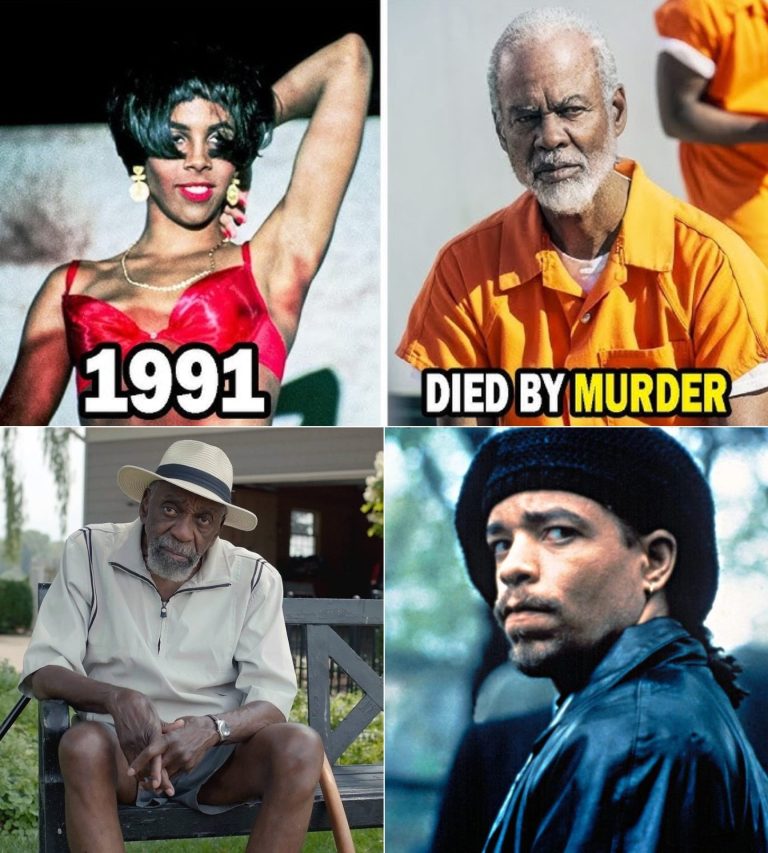In the annals of rock history, few deaths have been as shocking, as senseless, and as shrouded in unanswered questions as that of Randy Rhoads. On March 19, 1982, the 25-year-old guitarist, hailed as a virtuoso and already considered a revolutionary force in heavy metal, was 𝓀𝒾𝓁𝓁ed in a plane crash in Leesburg, Florida. Alongside him perished Rachel Youngblood, Ozzy Osbourne’s tour seamstress, and Andrew Aycock, the band’s tour bus driver and the man at the controls of the doomed Beechcraft Bonanza F35. For decades, the tragedy has been explained as nothing more than a reckless joyride gone horribly wrong. But new theories and revelations have begun to emerge, casting doubt on the official narrative and igniting a fresh wave of speculation about what really happened in those harrowing final minutes.

According to the National Transportation Safety Board’s official report, the crash was caused by “poor judgment” on the part of Aycock, who attempted unauthorized low passes over Ozzy Osbourne’s parked tour bus. At 10:00 a.m., the small aircraft clipped the roof of the bus before spiraling out of control, crashing into a nearby garage, and exploding in a ball of fire. The devastation was immediate and overwhelming. Eyewitnesses recalled the horrifying sight of debris, flames, and human remains scattered across the ground. The accident instantly claimed three lives and left the rest of the band and crew in shock. For Ozzy, who watched helplessly from the ground, the day would remain the darkest of his career.
But behind the stark, clinical wording of the NTSB report lies a swirl of conflicting accounts, disturbing details, and unaddressed anomalies. Many close to the band have long questioned whether the official explanation tells the full story. Keyboardist Don Airey, one of the few who witnessed the crash up close, has described seeing the plane’s erratic maneuvers through a telephoto lens. He insisted that what he observed didn’t look like a joyride at all. Instead, he recalled what appeared to be a struggle inside the cockpit, with frantic movement moments before the plane clipped the bus. If true, this would fundamentally alter the accepted narrative, suggesting chaos or even violence erupted in those final seconds.
Adding to the strangeness is the fact that Randy Rhoads, despite his reputation as a fearless performer, was deeply afraid of flying. Friends and colleagues have said he rarely boarded planes unless absolutely necessary, preferring to avoid the air whenever possible. On that morning, he agreed to the flight only because Aycock promised it would be brief, calm, and safe. Rhoads reportedly wanted to take aerial photographs for his mother, a gesture of love and connection that would tragically cost him his life. Rachel Youngblood, too, had misgivings. She suffered from a pre-existing heart condition and initially resisted getting on board. Yet reassurances were given, and the doomed trio stepped into the aircraft, unaware that fate had already been sealed.

The toxicology report on Aycock complicated matters further. Despite holding a pilot’s license, his medical certification had expired, and tests revealed traces of cocaine in his system at the time of the crash. Was he impaired? Did his judgment falter in the haze of drugs and adrenaline? Some insiders believe Aycock’s erratic behavior that morning went beyond mere recklessness. Rumors swirled that his low passes were not simply to thrill his passengers but were fueled by rage and bravado. His ex-wife was reportedly present that day, watching from the ground, and some theorize that his daredevil flying was intended as a dangerous display, perhaps even an act of intimidation.
Then there is the chilling theory put forward by former Ozzy Osbourne bassist Bob Daisley. He speculated that Rachel Youngblood may have suffered a heart attack mid-flight, potentially causing panic or distraction in the cockpit. If true, this could explain the erratic movement witnessed from the ground. Yet this idea clashes with the evidence of Aycock’s cocaine use and his documented history of irresponsible flying. It also raises troubling questions: why, given his record, was Aycock ever allowed to pilot that plane with members of the band on board?
Theories aside, one undeniable fact is that Randy Rhoads’s death robbed the music world of a talent whose brilliance was only beginning to unfold. With his fusion of classical technique and heavy metal ferocity, Rhoads had redefined what it meant to be a guitarist. His work on Ozzy Osbourne’s Blizzard of Ozz and Diary of a Madman remains groundbreaking, inspiring generations of musicians. At just 25, he stood at the threshold of a career that promised not only stardom but perhaps a complete reshaping of the genre. Instead, his story ended in fire and rubble beside a Florida mansion.

In the decades since, the crash has taken on the aura of myth. Fans, bandmates, and music historians continue to sift through the fragments of evidence, piecing together theories that range from the plausible to the conspiratorial. Was Aycock simply a reckless pilot under the influence, doomed to repeat his own history of dangerous behavior? Or was there something more sinister at play—a fit of rage, a struggle in the cockpit, or a medical emergency that spiraled into catastrophe? The truth may never be fully known, and perhaps that is why the tragedy lingers so powerfully in the collective memory of the rock community.
For those who loved Randy Rhoads—his family, his fans, and the countless musicians he inspired—the lack of closure is as painful as the loss itself. His mother never stopped mourning him, and Ozzy Osbourne has often spoken of Rhoads with reverence, haunted by what might have been. Each anniversary of the crash brings renewed grief, as well as renewed questions. What really happened that morning in Leesburg? Why did such a towering talent have to die in such a senseless way?
Forty-three years later, the mystery endures. What we are left with are fragments: eyewitness accounts, conflicting reports, rumors, and unanswered questions. And, of course, the music—a body of work that remains as vital and electrifying as ever, a reminder of a genius silenced too soon. The tragedy of Randy Rhoads is not merely that he died, but that he died with so much left to give, leaving the world forever haunted by the sound of what could have been.






